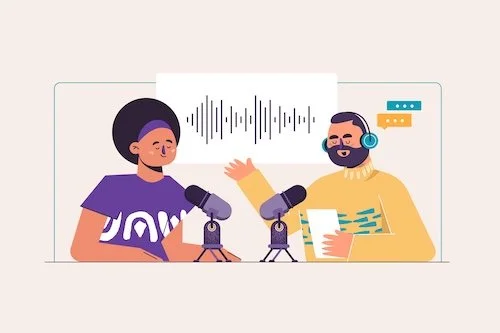At cred, we work across all aspects of the events business—from developing agendas and sourcing speakers to producing a conference from start to finish. Event management is only one aspect of what we do. Our speaker management team works on the other side of the equation by pitching compelling topics to event organizers to secure speaking roles for our clients. This dual approach opens up opportunities to work together on an event and learn from each other—the more collaboration, the better!
In this post, we bring you part two of our Q&A series between our two teams. Last time, the speaker side asked the events team about the green and red flags they look out for when determining which speakers get a spot on stage. For part two, we’re switching things up and giving our event organizers the opportunity to get inside the speaker team’s collective brain and better understand how they approach submitting clients to speak, how to make decisions around format and content, and more.
What format creates the best impact for speakers?
This will depend on a speaker’s goals, what they want to convey, their target audience, and realistically, how much time they have available to prepare! Here’s what we take into consideration when making recommendations on format:
Keynotes and solo talks. A presentation with one speaker on stage is ideal for clients who have a lot to say on a specific topic. It puts them front and center to demonstrate their expertise and gives the most control of the message. We consider whether speakers have the time to rehearse this and prepare a slide deck.
Panels and fireside chats. Moderated sessions are an engaging way for speakers to participate in a conversation that includes multiple perspectives. Speakers will need to meet with the moderator and other panelists in advance and ideally review questions and prepare talking points. Panels can be great opportunities to share the stage with other thought leaders in your field.
Roundtables & workshops. For speakers who value direct connection with an audience, these interactive sessions offer the opportunity to lead discussion and both ask and answer questions.
Co-presentations. These are great for investors who want to highlight a portfolio company they work with, or vendors who want to share a customer case study. Having more than one person on stage can help a presentation feel more dynamic and give the audience a chance to hear different points of view.
How do you determine the right topic for an event?
We thoroughly research an event as we’re in the process of deciding whether to submit. If we decide it’s a go, here’s what evaluate further to determining which topic to put forward:
Tracks and themes. What is the focus of this year’s event? Is there a specific theme? Looking at the list of tracks, how many of them align with our speaker’s topics and messages. Can we repurpose existing content or would we have a better chance trying something new?
Past agendas. We always look through these when they’re available to understand the type of content an event has featured previously. We also take cues from previous sessions on how to write titles (quippy or more formal?), how to structure takeaways, and how much detail to include in our session description, and whether the event prefers actionable or visionary content.
Audience. Understanding who attends is a must. We look at who the event organizers say the event is for, including industries, attendee titles, and company size and type. We also look at the speaker and sponsor list.
Avoid the sales pitch. When writing session descriptions, we’re mindful of positioning our speakers as thought leaders, not sales reps. Sometimes content can be perceived as too promotional by organizers of one event, but not another, so we use our industry knowledge to determine where it might be ok to include more company or product-focused content.
What are common restrictions for speakers?
We collect quite a bit of information from speaker clients when we begin working together to ensure we understand their preferences on the following. We use restrictions to refine our list of event targets and only submit for opportunities we think our clients will say yes to.
Travel. Is the speaker open to international travel? Do they prefer to focus on key markets in the US? Do they have a favorite city they would love an excuse to spend more time in?
Blackout dates. We ask for availability as far in advance as a speaker can provide.
Competitors. Some speakers are open to sharing the stage with competitors and welcome debate on panels while others prefer to fully own the conversation.
Recording. We always ask event organizers if a session will be recorded and if it will be widely available after the event or only shared with attendees.
This post was authored by Taylor Belshause and Justine Pallas.
If you want to stay up to date on speaking and event trends, subscribe to our newsletter! And if you are interested in working with our speaker or event management team, get in touch.




